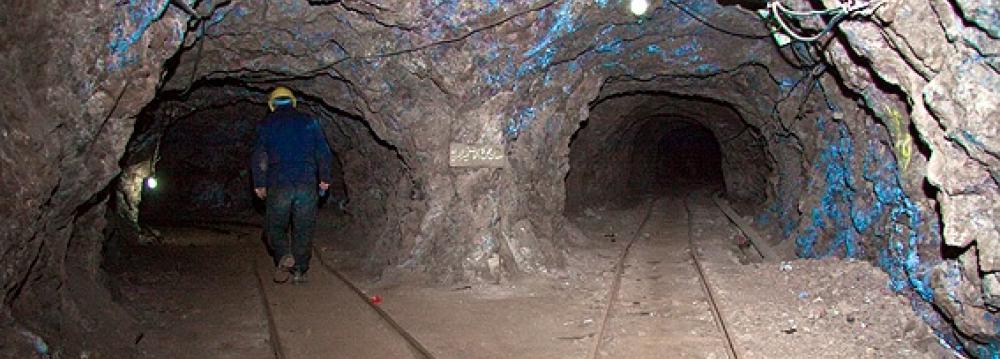For nearly 2,000 years, Iran has remained the world’s leading supplier of turquoise. The gemstone, which is naturally blue but turns green when heated, is found in the heart of the city of Neyshabour in the northeastern Khorasan Razavi Province.
The Neyshabour Turquoise Mine holds over 8,250 tons of proven reserves and produces nearly 40 tons of different grades of the precious stone every year, SMT daily reported.
Although the mine is one of the largest in the world and the quality of its turquoise is unmatched–the US produces a greener, more porous stones that tends to fade more quickly–it has a meager share of the global turquoise market.
Experts point to lack of modern exploration and mining equipment, as well as mining and processing expertise and investment in the sector as primary factors impeding the growth of turquoise business in Iran.
According to Amir Emam-Jome, a mining expert, the lifting of sanctions imposed on Iran over its nuclear program–as part of the July 14 nuclear deal struck between Iran and world powers–can put Iran’s turquoise mines back on track by providing them with access to latest technologies to improve quality and reduce waste.
“The company in charge of exploiting the Neyshabour Mine is not operating efficiently due to lack of expertise. In fact, they carry out exploration alongside exploitation projects,” he said.
He noted that the mine’s indigenous workforce dig tunnels in the mine based solely on experience.
The number of tunnels has increased so much that “a slight earthquake could tear down the whole mine”, he said.
According to Emam-Jome, the company in charge of the mine can use the post-sanctions opportunities to equip its firm with tunnel-boring machines to not only reduce operational costs, but also boost the turquoise quality.
TBMs, also known as moles, are mining machines used to excavate tunnels with a circular cross section through a variety of soil and rock strata. Used as an alternative to traditional methods of conventional mining, TBMs have the advantages of limiting disturbances to the surrounding ground and producing a smooth tunnel wall.
Moreover, local miners still use traditional blasting techniques for extraction, which crushes the turquoise stones and reduces the mine’s output significantly.
In addition to the outdated mining methods, the sector also suffers from traditional cutting techniques, which fail to add proper value to the turquoise. This is while Chinese, Arab and Turk traders purchase Iran’s unprocessed turquoise and export it under their own brands.
“Despite the global gemstone trade’s great potential, Iran has not yet been able to properly benefit from it because of a lack of modern cutting and processing technologies,” says the managing director of Goharneshan Gemological Institute and Association, Hamidreza Alimardani.
According to market experts, the price of an average quality turquoise increases a hundred times once it is properly cut and the increase in value is even seven times more in case of high-quality gems.


